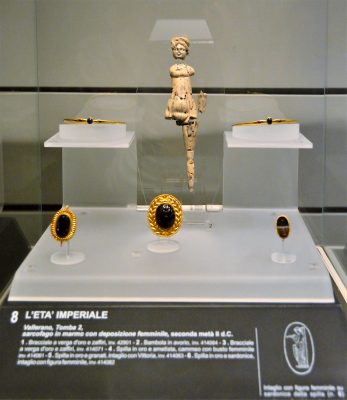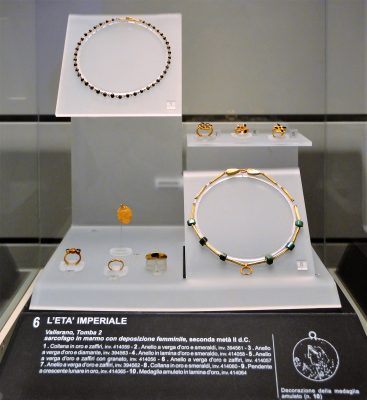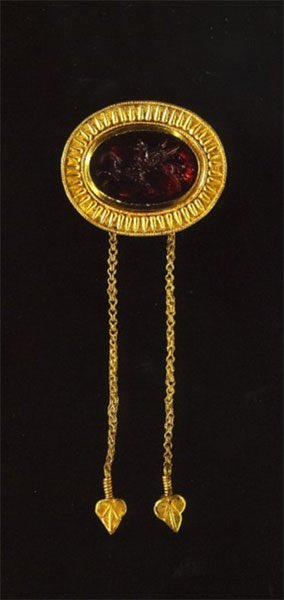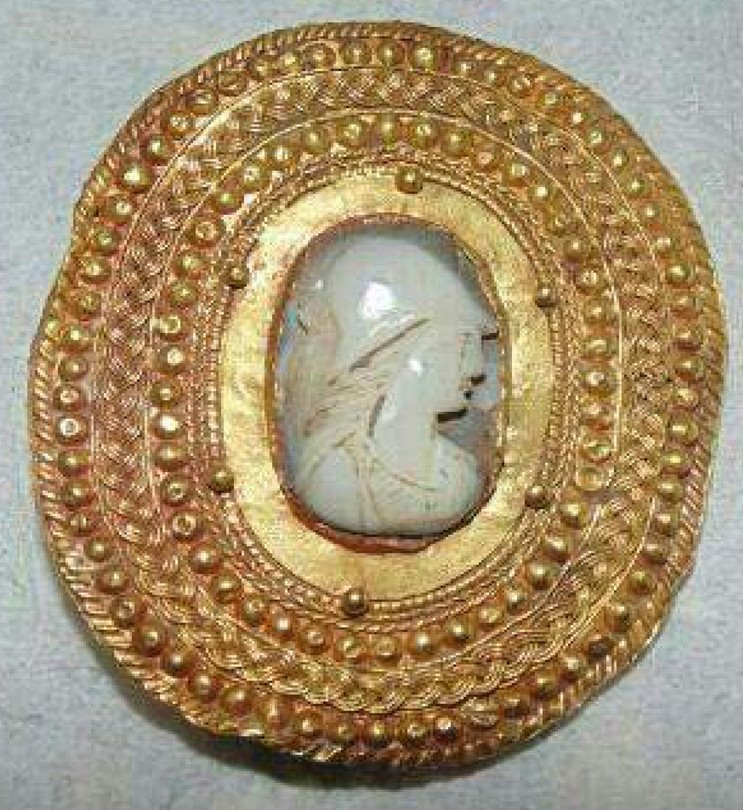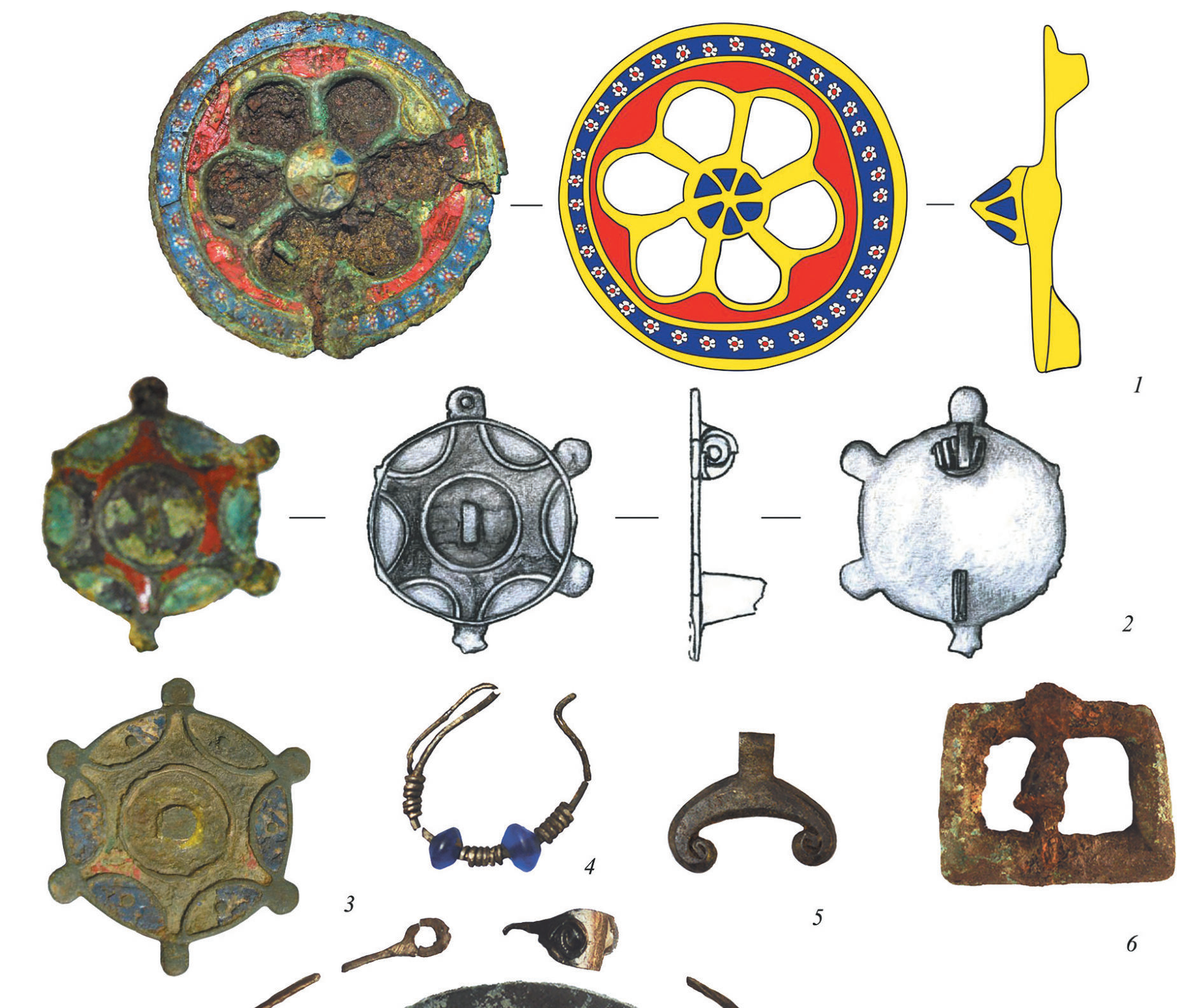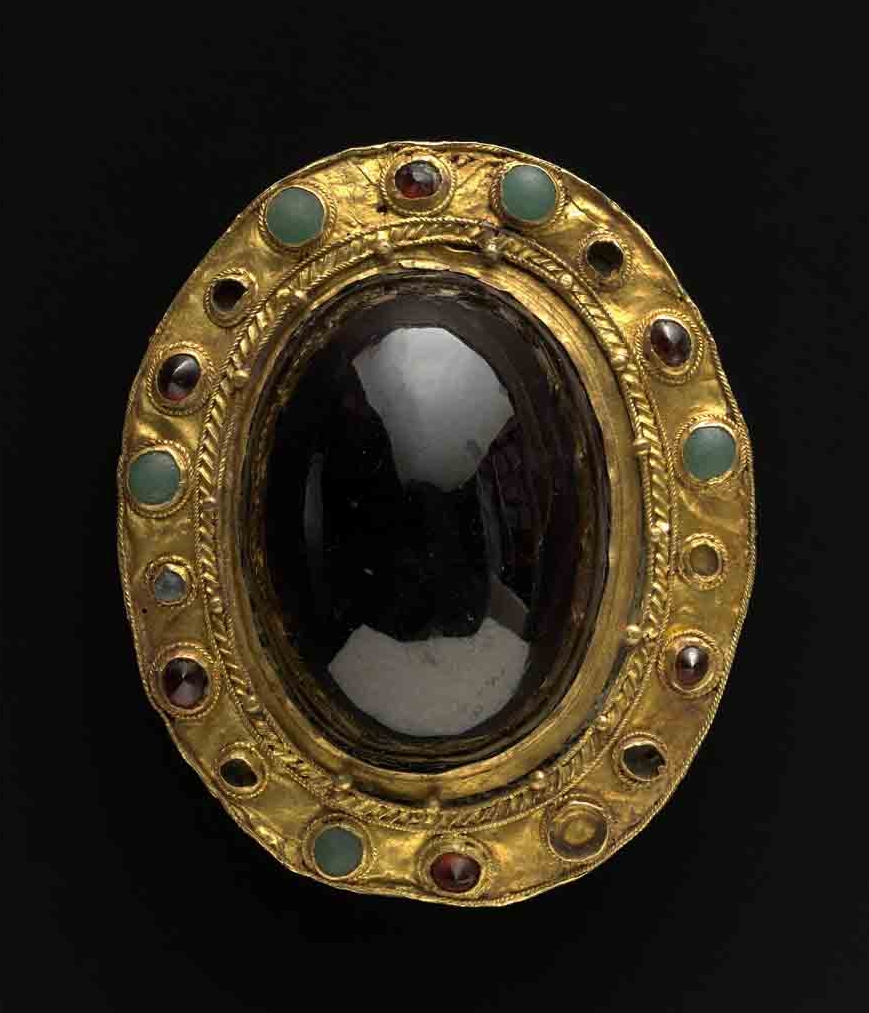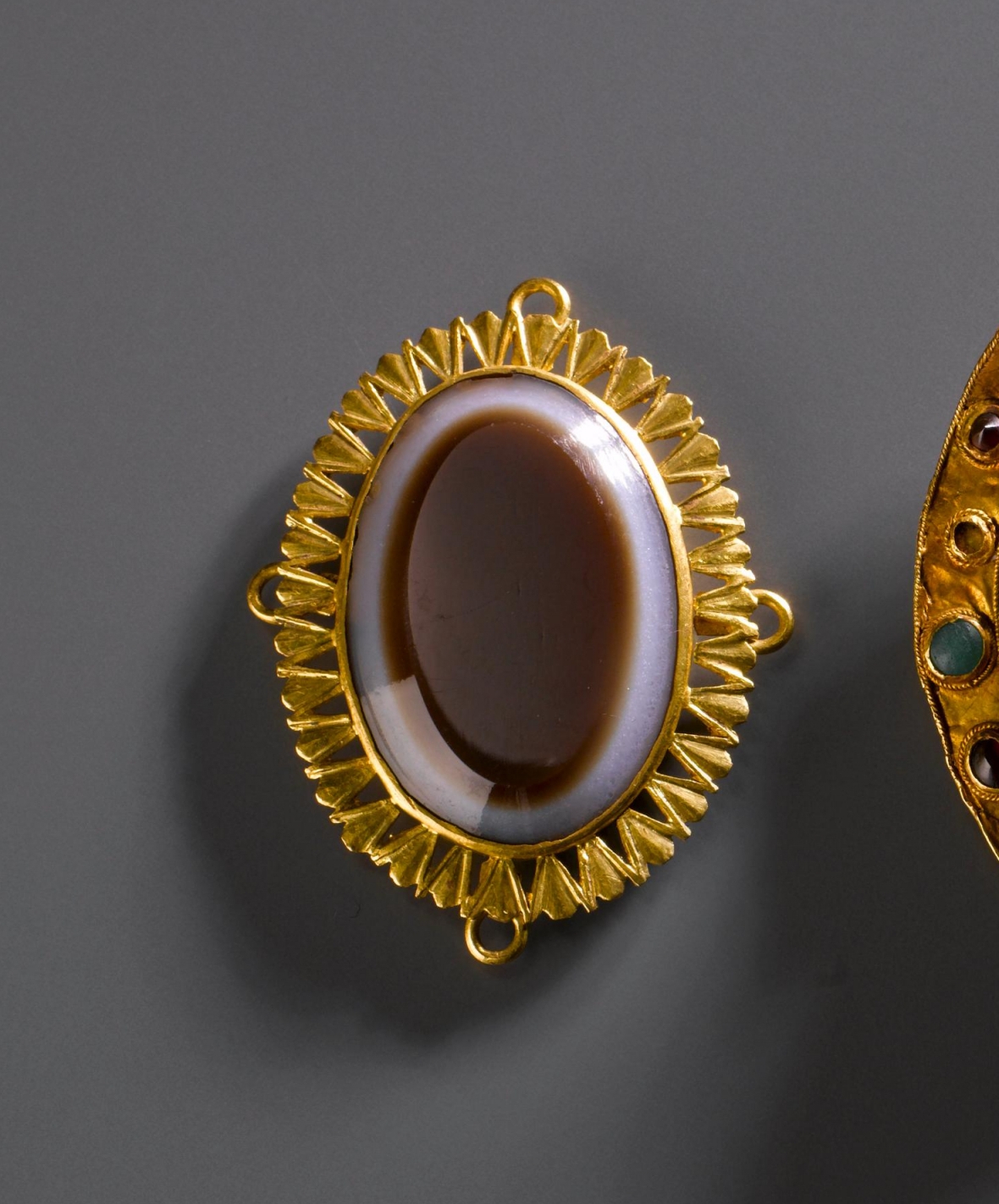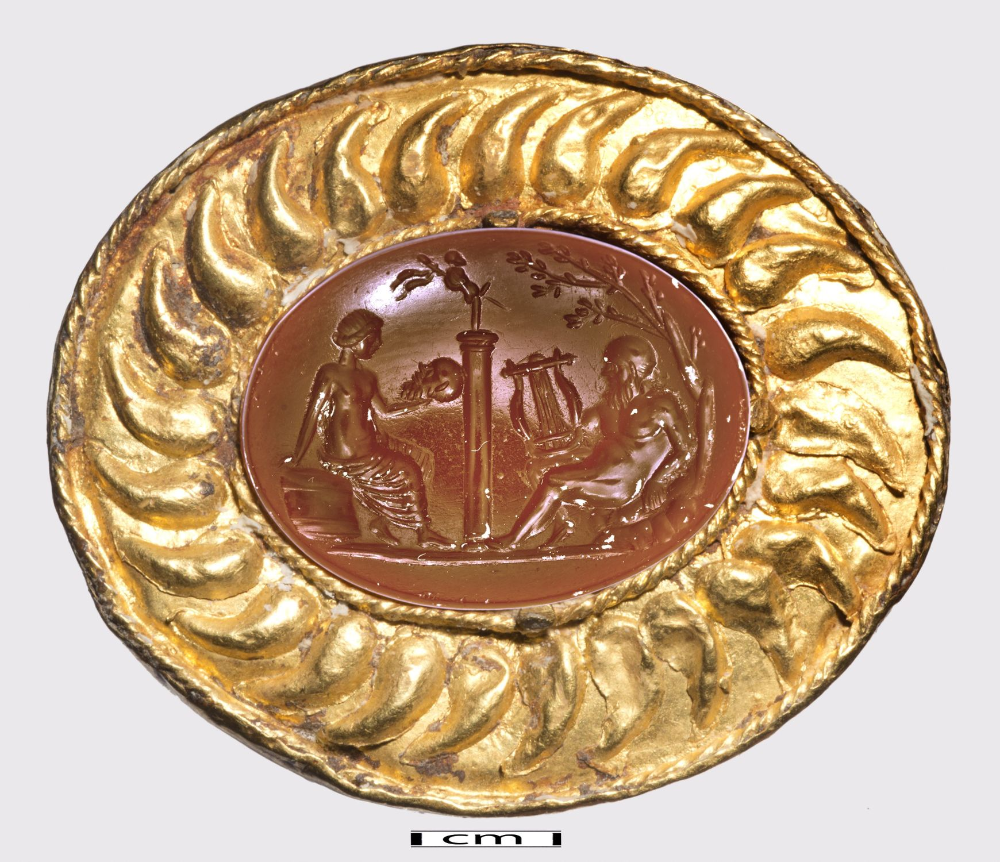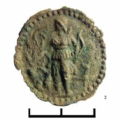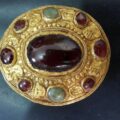Jewelry from a burial of a young woman, likely of Syrian origin, at the Vallerano necropolis (Rome), Tomb 2, second half of the 2nd century. “The material wealth and funeral rites of the Vallerano find, similar to those of other young Roman women such as Crepereia Tryphaena and the Grottarossa mummy, can be linked to the Syrian community in ancient Rome. The Syrian enclave had its own religious, traditional, and commercial ties to Palmyra, a major caravan crossroad near the Euphrates River where luxury goods from the Persian Gulf and Arabia converged en route to Rome.” [The Vallerano Diamond]
Among the grave goods was jewelry with sapphires, the necklace, two bracelets, and three rings.
Gold rings with sapphire
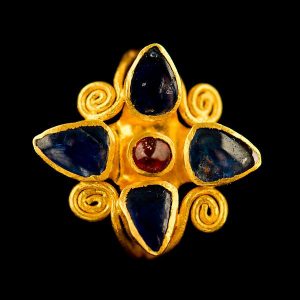
2nd century (before 150-180) gold ring with sapphires and garnet. 1.7 × 1.6 cm
Museo Nazionale Romano, Il Medagliere, Rome, Inv. no. 414056

Gold rings from an unidentified marble sarcophagus from Vallerano, late 2nd century
Rome, Museo Nazionale Romano, inv. 414057,414056, 394562

Jeffrey Spier
Byzantium and the West: Jewelry in the First Millennium (London, 2012); pp. 14-15
“The rings are remarkable for their unusual shapes and especially for their use of gems of great rarity and quality, including sapphires of deep blue color, emeralds, garnets, and even a diamond, which is very rarely encountered in Roman jewelry. The young girl’s parents evidently took a special interest in gemstones of high quality and had them set in unconventional rings and jewelry.
These new varieties of jewelry anticipate the marked changes of taste that would occur in the third and fourth centuries at the time the empire itself was undergoing radical transformation.”
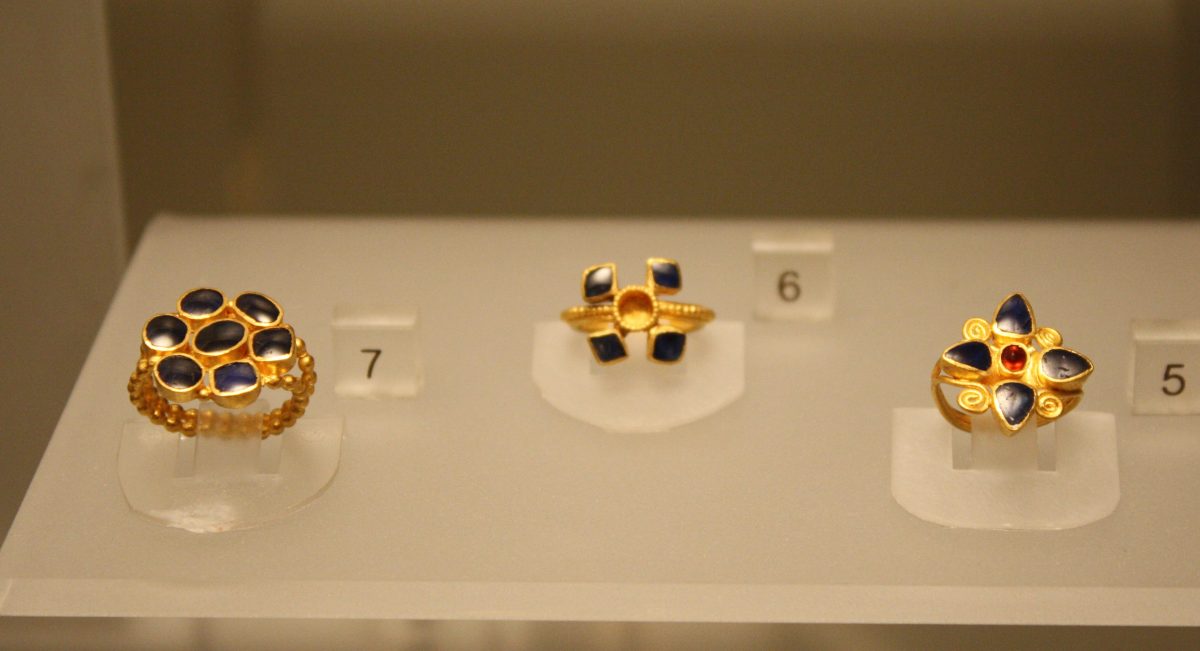
Brooch, clasp
1. Brooch / clasp made of gold with amethyst cameo [female bust in high relief], made before 150-180 CE.
Dimensions: 5 × 3.5 cm

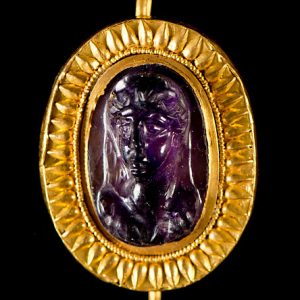

2. Brooch/ clasp with sardonyx intaglio
2,35 x 1,45 cm
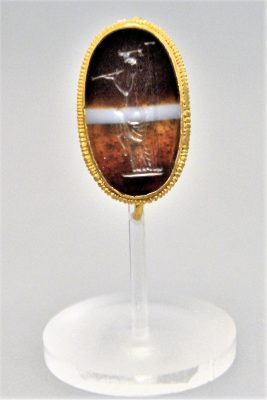

3. Gold brooch with a garnet intaglio with an image of Goddess Nike / Victoria.
Dim. 4.5 x 3.7 cm
https://museonazionaleromano
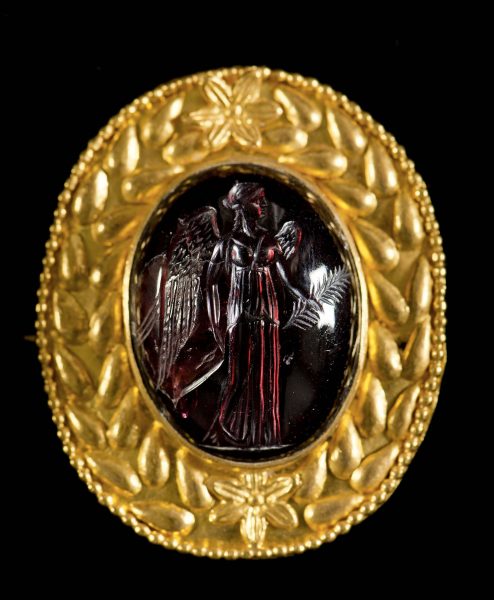
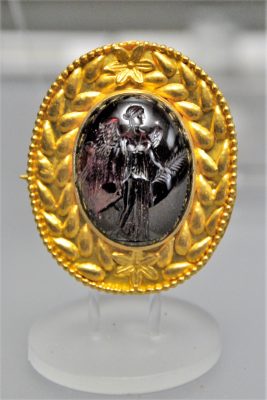
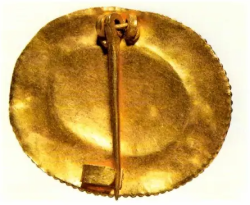

Necklace with a lunula pendant, made of gold with the emerald beads, before 150-180 CE.
pendant dimensions 1.5 x 1 cm

Gold ring with a diamond from India
This gold ring contains a rough diamond (approximately 0.15 ct; 2.2 x 1.5 x 2.6 mm) of the Indian origin. “The side view shows that the rough diamond was simply inserted into a central enlargement in the gold band.”

- The Vallerano Diamond from Ancient Rome: A Scientific Study; Alessandro Bedini, Sylvana Ehrman, Stella Nunziante Cesaro, Maria Pasini, Ida Anna Rapinesi, and Diego Sali https://www.gia.edu
- Jeffrey Spier; Byzantium and the West: Jewelry in the First Millennium (London, 2012); pp. 14-15
- A. Bedini (a cura di), Mistero di una Fanciulla. Ori e gioielli della Roma di Marco Aurelio da una nuova scoperta archeologica. Skira 1995 https://www.academia.edu
- I gioielli della tomba n.2 della necropoli di Vallerano, Roma: Ipotesi sull’origine delle gemme; C. Aurisicchio, A. Bedini, D. Ferro, G. Graziani, M. Martini, S. Nunziante Cesaro; I. Rapinesi, S. Sciuti, E. Senatore https://www.academia.edu
- https://met.org/2GrGARt
- Pictures © Photo Massimo Gaudio >> L’oreficeria e i corredi funerari al Museo Nazionale Romano di Palazzo Massimo https://www.bellezzeromane.com

